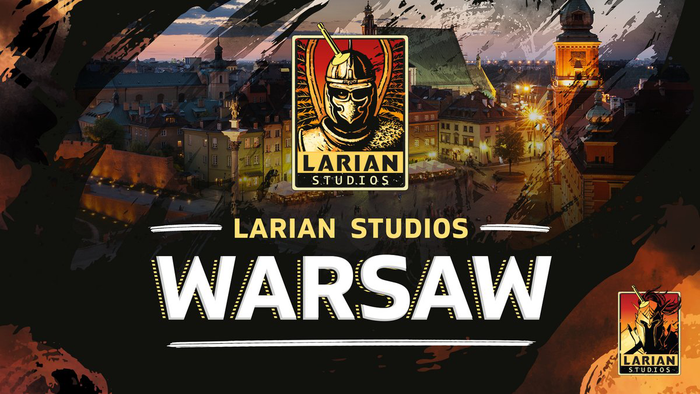MIGS 2011: Redefining Challenge In Games Can Push Artistic Boundaries, Says Rohrer
"It's not challenge necessarily that’s driving normal people from games, but this broken way we handle challenge in game design," said indie developer Jason Rohrer at the Montreal International Games Summit.

The success of the Call of Duty franchise gave the games industry a reason to celebrate, said Jason Rohrer, the indie developer behind such experimental games like Between, speaking at the Gamasutra-attended Montreal International Games Summit. With tens of millions of units sold and billions of dollars generated, Call of Duty has led game advocates to point out just how big and mainstream interactive entertainment has become. But when you compare unit sales of even the biggest games to a recent hit film like Avatar, games still pale in comparison. And when population and monetary inflation is taken into account, games look even worse -- Rohrer did his own number crunching and determined Gone with the Wind had about 1 billion viewers when the world population was only 2 billion people. He wasn't trying to take the wind out of the games industry's sails, but he was just pointing out that "We can't celebrate our conquest of the mainstream quite yet." Rohrer referred to writer Tom Bissell, author of the book Extra Lives, as well as works that don't have to do with video games. After expressing admiration for the writer, he pointed out that Bissell recently said he would no longer play video games. But it's not just Bissell. "It's gotten so bad that outside of my friends in the industry, nobody that I know plays video games anymore," Rohrer said. The medium is losing its best, most thoughtful players. Why is that? Rohrer repeated his oft-stated case that games have yet to cross that "cultural line in the sand." On one side of that line are works like Vladimir Nabokov's Lolita and Picasso's Guernica. Even rock and roll has crawled above that line, with works like The Beatles' Sgt. Pepper's Lonely Hearts Club Band. But even the games that are viewed as the best that the games industry has to offer -Shadow of the Colossus, the original Legend of Zelda, Metal Gear Solid 2 -- don't come close to comparing to some of the masterpieces above the line, Rohrer said. Game advocates, Rohrer said, might say that games are so different, that they can't, and shouldn't, be compared to non-interactive media. But Rohrer doesn't agree with that argument - novels, movies, photography and music, for example, are all different, unique forms of media, but they are all truly mainstream, and all expressive in their own, very unique ways. And all above that cultural line. "We do need to figure out how to cross this line," Rohrer said. Just how can games cross that line? Perhaps the games industry needs more art games that explore expressiveness in an interactive way. Interactivity, after all is gaming's unique hook. "Art games" like Rohrer's own Between and Sleep is Death, or maybe Tale of Tales' The Graveyard can perhaps push the boundaries. But despite his own renowned efforts in the art games space, Rohrer took a dig at himself and at the movement. "It seems that this whole 'art game' thing is dead, if not dying," he said. "It's a polite conclusion - these games are boring. A lot of people have been telling me this over the last two years," he laughed. So, he said, this got him thinking about the nature of boredom. He determined that "Interactivity is not enough.... [It's] not enough to make a work that is not boring." Plot, he said, was one way to overcome boredom, and make a medium engaging. One can sit and watch a movie for hours, engaged through the ears and eyes. Add plot to music, as in Alice's Restaurant, and an 18-minute song becomes surprisingly bearable even for the relatively long running time. But even plot is not enough. For Rohrer, the magic ingredient that can overcome boredom, and perhaps get games to cross that cultural line in the sand, is challenge. It's a bit of a paradox, he admitted. The current leading theory is that games need to be more accessible, i.e. easy. But he said the brain yearns for challenge. With no challenge, gaming is busy work, and "Nobody likes busy work," he said. Game designers need to embrace challenge, said Rohrer. "We as game designers, we've been fighting against the necessity of challenge in games, but it might be like the avante garde filmmakers who resisted plot." Now, he said, these filmmakers have embraced plot, and realized that there are many ways that they can play with plot, and be experimental and expressive. It's the same way with games and challenge. There's a "limited spectrum of game challenge," said Rohrer. "We need to be inventing new challenges that complement what we're trying to express. Then it won't feel like a gimmick, but a potent expressive tool." He used a few personal examples. He played Kane & Lynch 2 on the hardest mode, and died repeatedly, respawning at the beginning of a stage, going through the same motions, talking to the same characters and dying at the same spot after 10 minutes, over and over again. He turned it down to medium after about 10 times. "It's not challenge necessarily that's driving normal people from games, but this broken way we handle challenge in game design," he said. Rohrer played BioShock after talking to a game designer friend who told him that the game's Vita Chambers (points where players respawn after death) remove challenge from the game. When a player dies, they spawn there over and over - but the game's state does not change, so enemies that lost health are still at the same health level after a player returns from a Vita Chamber to finish them off. He tried playing BioShock using a wrench only - no plasmid power-ups, no fancy weaponry. He made it through the entire first section of the game, even to the boss, and beat him. He had to make a lot of visits to the Vita Chambers, but he still made it through. While he enjoyed the game the first time he played it as intended, "All of a sudden it came boring to me. ... The game might seem engaging, but it's falsely engaging, kind of tricking you into thinking it's engaging," he said. But there are games that do handle challenge appropriately, he said. Games like Far Cry 2, Demon's Souls and Minecraft use what he called the "freedom of approach method." Players work their way through complicated subsystems of a game, working towards a goal. How they get there is up to them. And there are what he called the "microchallenge" games like Super Meat Boy, VVVVVV and Flywrench. "These games break their challenges up into extremely small chunks," said Rohrer. There's no limit to lives, and there are checkpoint respawns. "That allows you to have this tight, rhythmic loop," he said. "...As a result you become so good at controlling these games." What these games do is present challenge, but they don't feel repetitious. And these challenging games, Rohrer said thoughtfully, "feel strangely expressive ... They seem to be expressive about the nature of challenge." He added, "Exploring challenge in games [is] a pretty valid thing to be doing with games artistically. ... We can't be pushing artistic boundaries by pandering to a game illiterate mainstream."
About the Author(s)
You May Also Like













